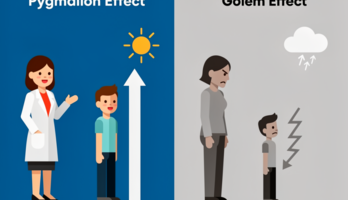150033 (621178), страница 4
Текст из файла (страница 4)
Distributed winding configuration has one slot per pole per phase and its winding factor is equal to 1.
-
Winding arrangement
Single layer winding, where each slot contains one coil side, will be used in this design as it is economical to manufacture and has simpler end connection. Emf and mmf can be modified to reduce harmonics. In a three phase system even harmonics do not appear due to the winding symmetry, the only visible harmonics are the belt harmonics.
-
Winding Pitch
Short pitch is the most commonly used type of winding pitch. It reduces the distorting harmonics and produces a truer sinusoidal wave. The length of the end connection is also reduced thereby saving copper and reducing copper loss in the coil.
The drawback of short pitch winding is that the induced emf in it is smaller than in a full-pitch coil. The reason is that the total flux linking the short-pitch coil is smaller than that of the full-pitch coil.
-
-
3.6.9 Number of turns
The number of turns per pole is estimated to be 60 turns from equation 3.11.
The design parameters discussed will be modelled in FEMM in the next chapter to induce the output voltage and flux of the generator.
-
-
Chapter 4. Modelling the design in FEMM
-
4.1 Introduction
The investigation that will follow focuses on the effect of substituting standard commercial magnets with recyclable speaker magnets that were collected from a dumpsite in the village, to compare the performance of the generator in either case.
In this chapter, the two pole generator geometry discussed in chapter 3 will be modelled in FEMM to analyse the output induced voltage and the flux of the generator. The lua-script in FEMM is run and the rotor is rotated 360 electrical degrees, for the lua-script refer to appendix C1.
Initially, a choice was made of three typical commercial magnet grades. Neodymium-iron-boron NdFeB was chosen from the rare-earth magnet group. Alnico6 was chosen from the Alnicos and the last type was barium ferrite from the ferrite or ceramic group. Then the machine will be modelled using different types of commercial magnets to investigate the performance of the generator.
The author then proceeded to investigate the magnetic properties of the loudspeaker magnet. This was done so that the parameters can be modelled in the finite element package.
Finally a design using the loudspeaker magnets was modelled to explore the recycled generator output.
-
4.2 Two pole geometry
Table 4.1 below summarizes the generator specifications that were discussed in chapter 3. These parameters will be modelled in FEMM to view the output induced rms voltage and the flux.
| Quantity | Value |
| Frequency | 39.79Hz |
| Poles | 2 |
| Connection | Y |
| Diameter of Rotor | 50mm |
| Machine Depth | 15mm |
| Air gap length | 0.5mm |
| Turns per phase | 80 |
| Stator slots | 6 |
| Steel Core | 1020 steel |
Table 4.1 Data of designed PM machine
The design is modelled in FEMM and is illustrated in figure 4.1 below.

Figure 4.1 The generator modelled in FEMM
-
-
4.3 Commercial magnets
To investigate the performance of the generator, the author began by modelling the generator with standard commercial magnets with the properties given in table 3.1. The output rms emf and flux of the generator is tabulated in table 4.2 with different magnets that were used in the design.
Refer to appendix B for the graphs of the outputs. Matlab soft ware was used to draw the output rms emf and the flux, matlab code included in appendix C2.
Table 4.2 Generator output with commercial magnets
| Magnet | Type | Flux (Rms) | EMF (Rms) |
| Rare-Earth | NdFeb32 | 0.0459 | 9.4262 |
| Alnico | Alnoco6 | 0.0186 | 5.1619 |
| Ceramic | Ceramic8 | 0.0175 | 3.6075 |
-
4.4 Recyclable magnet found in the rural area
The magnet that was used in this section was from a loudspeaker that was found lying in one of the dumps at Ga-Rampuru village. To start with the magnet shape was not of concern. The author aimed to investigate the performance of the magnet on the speaker if used as it was found. The properties of this magnet were investigated and a design was modelled using these magnets. The magnet is shown below in figure 4.2.
-
4.4.1 Background on the characteristics of loudspeaker magnets
For speaker applications, the amount of permanent magnet required is directly proportional to the rated output power of the speaker. In other words high power speakers are often made using the high-grade magnetic types like the rare-earth. But since the speakers found in the dumpsite were from low power appliances their typical magnets are normally from the ceramic group type. In addition unlike Alnico magnets, ferrite or ceramic magnets are not easily demagnetised magnetized and hence find wide application in such appliances.
4.4.2 Properties of the loudspeaker magnet
According to its nameplate the speaker that used the magnet in figure 4.3 had a 0.5W rms and an impedance of 8 ohm. The magnet type on the loudspeaker is a ferrite [Refer to appendix D1]. The manufacturer of the magnet on the speaker is traced in order to find the B-H properties of the magnet on the speaker.
Appendix D2 indicates TDK datasheet for ferrite magnets FB series. These notes were used to find the magnetic, physical and mechanical characteristics of the magnet. The properties of the loudspeaker are summarized in table 4.3.
| Magnet | Type | Br (T) | Hc (kA/m) |
| Ferrite | FB5N | 0.43 | 214.9 |
Table 4.3 Summarized properties of the magnet speaker
-
4.4.3 Output EMF and flux of the recyclable generator
The properties were modelled in FEMM, and the generator outputs are tabulated in table 4.4. Refer to appendix B2 for the graphs of the outputs.
| Loudspeaker Magnet | Flux (Rms) | EMF (Rms) |
| Ferrite | 0.0171 | 3.4987 |
-
Table 4.4 Generator output with the loudspeaker magnet
-
-
4.5 The estimated output power of the generators
The output electrical power of a generator is given by:
 (Eq. 4.1)
(Eq. 4.1)
where V is the terminal voltage of the machine. The power factor is assumed to be unity for these calculations since all the simulations and investigations are done at no-load.
From the rated power of the generator which is 36W. If the rated voltage is assumed to be 12 V then the rated current of the generator can be calculated from equation 4.1 to be 1A.
Table 4.2 and 4.3 above gives the results of the simulated induced voltages and flux obtained from the generator with commercial and recycled magnets. Using the 1A above as the rated current, the output power of the generator using commercial magnets and recycled loudspeaker magnets is summarized in table 4.5 below. The output power in all the cases is calculated from equation 4.1.
| Magnet | Type | Output Power |
| Rare-Earth | NdFeb32 | 28.3W |
| Alnico | Alnoco5 | 15.5W |
| Ceramic | Ceramic8 | 10.8W |
| Ceramic | Speaker magnet | 10.5W |
Table 4.5 The output power of the generator
-
-
Chapter 5. Analysis of the generator outputs
In this chapter the author first began by analysing the output power of the generator designed with commercial magnets and the one with recycled loudspeaker magnets. The author then explored the factors that may have affected the outputs from the recycled generator.
The terminal voltage induced from the recycled generator is also explored to view if it can be used in any applications in the rural village. This is done so that the voltage can be evaluated if it is useful or not
Lastly the loudspeaker magnets are investigated to view how they can be used in the recycled generator design; whether they should be smashed and aligned to be re-used in the generator design or if they should be used the way they are without being smashed.
-
5.1 The estimated output power of the generators
The output power of the generators is estimated from the output induced voltages of the generators. Consequently, this means that the higher the terminal voltage of the generator the larger the output power.
From the theory of magnets it is clear that the induced voltage is directly proportional to the remanent magnetic flux density Br of a magnet. In other words it is expected that rare-earth magnets which posses higher Br will always induce high voltage when used in generators. Therefore it can be said that the type of magnet used in a generator is very important as it determines the output power of the generator.
As can be seen from the results, the induced voltage of the generator with NdFeB magnets from the rare-earth magnet family is higher than that with the AlNiCo and ferrite magnets. This was expected because of the different B-H properties of these magnets.
The recycled generator in this thesis was designed using loudspeaker magnet that is from the ferrite family. These types of magnets are cheap and readily available, but their disadvantage is that they posses low surface flux density. The induced voltage was therefore expected to be much lower than the voltage induced in a generator with NdFeD magnets.
-
-
5.2 The rms output flux of the generator
The magnetic flux density in the gap of PM generators is limited by the remanent magnetic flux density of PMs and saturation magnetic flux density of ferromagnetic core. Hence, the simulated value of output flux is directly proportional to the remanent magnetic flux. In addition, permanent magnet machine cannot normally produce the high flux density of a wound pole rotor.
-
5.3 Factors that may have affected the recycled generator outputs
There are many factors that should be taken in consideration with regards to the induced voltage from the recycled generator. Some magnetic deterioration may have occurred after the magnets were thrown into the dump. But, due to the magnet’s magnetic permanent properties, these magnets are expected to still have some surface flux density when found in the dumpsites.
















